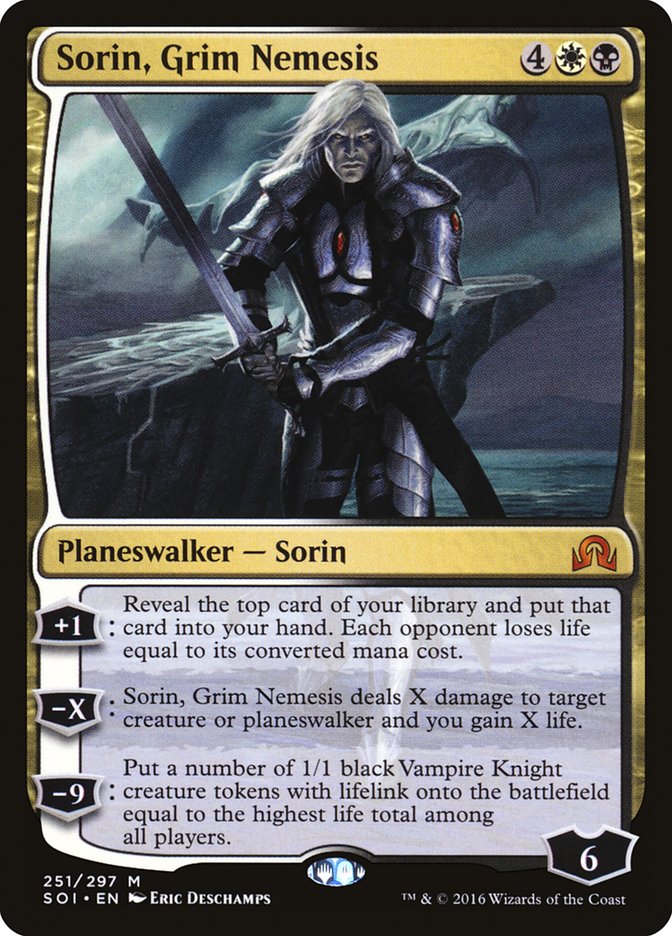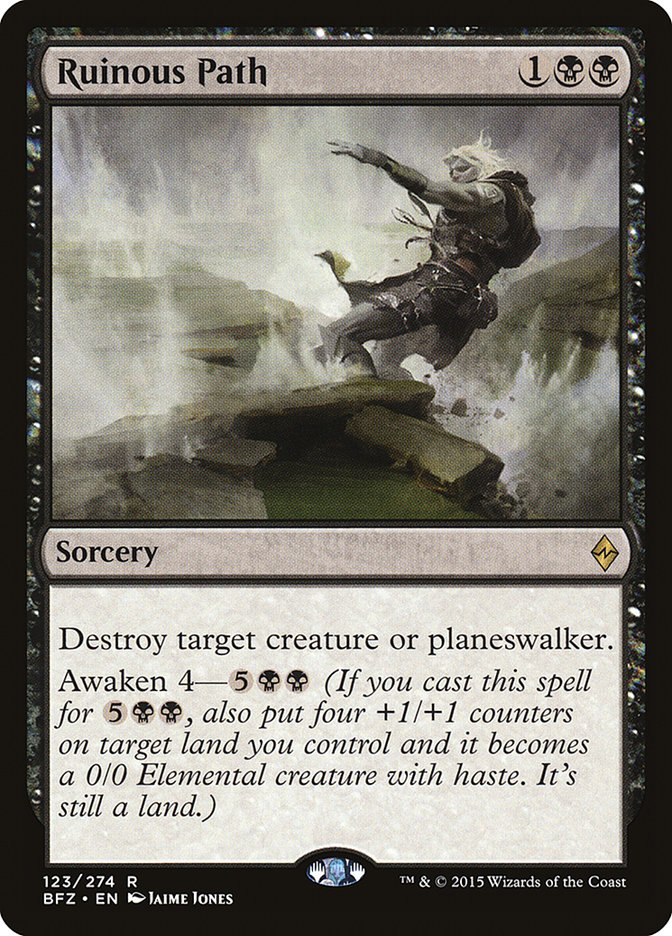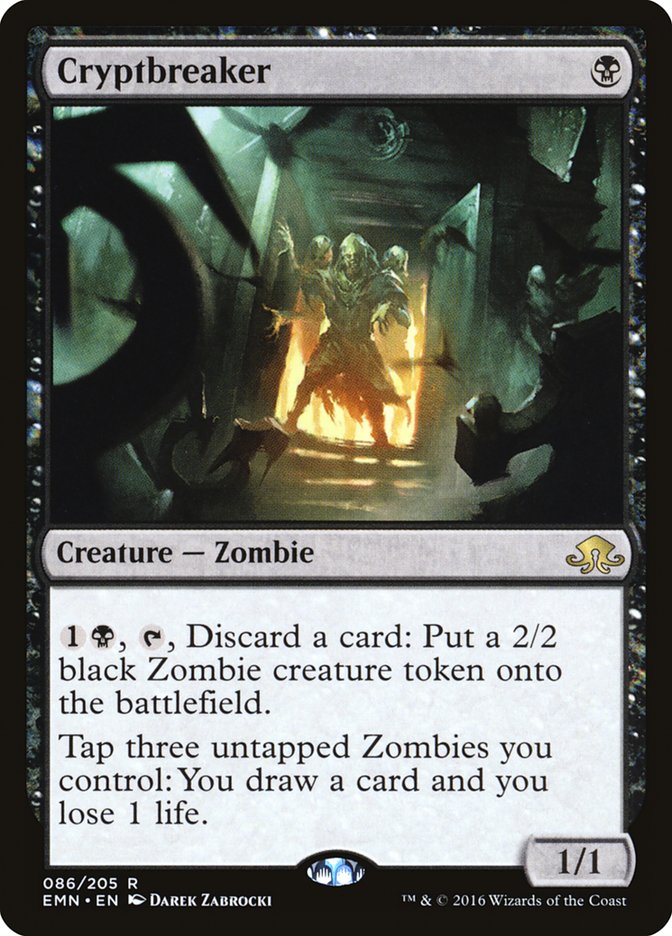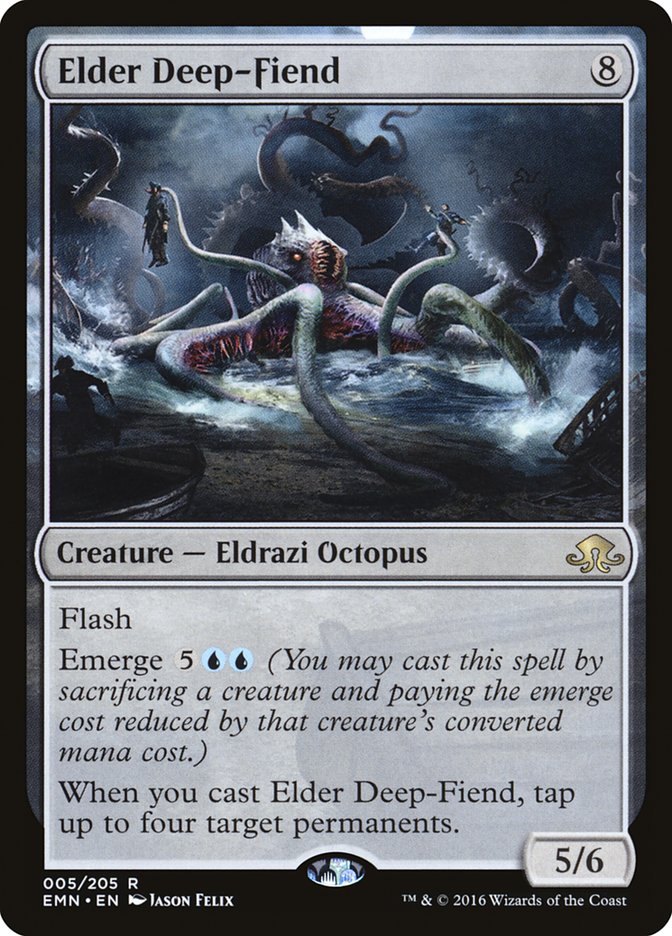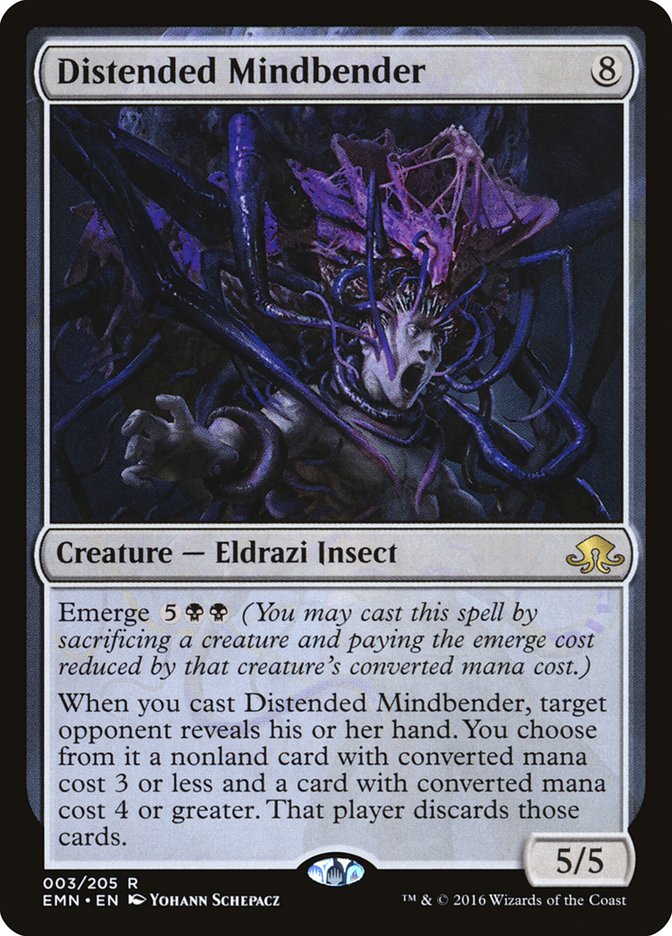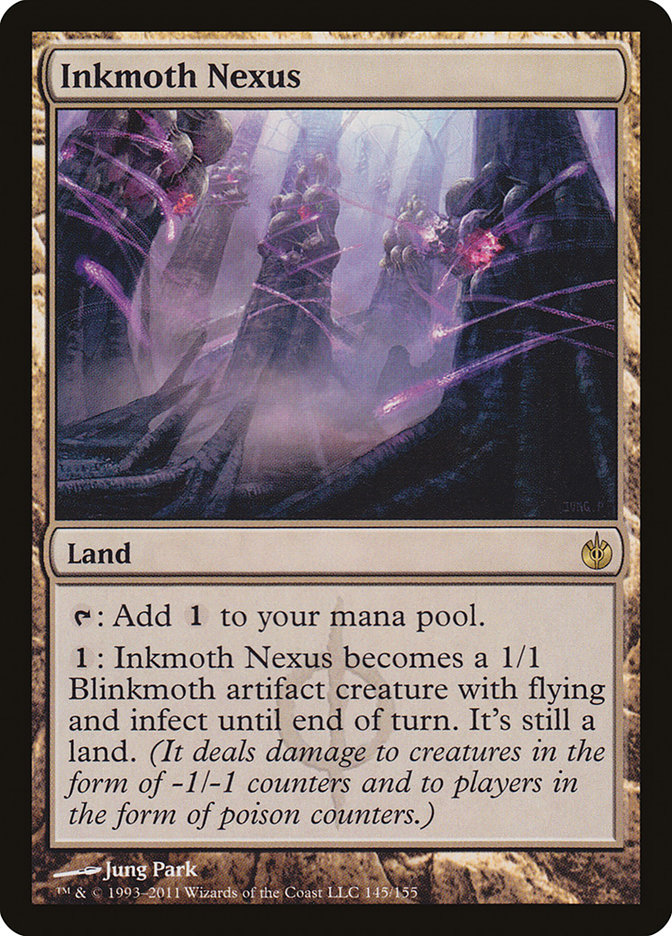1. Bant Company is still the most dangerous deck in the format.
Tom Ross : Fiction. Bant Company is no longer the best deck in the format, just a deck in the format. I wouldn’t say the current format has a clear best deck.
The “most dangerous” deck in my opinion is Pedro Carvalho’s U/R Spells deck that went 9-1 at Pro Tour Eldritch Moon. The deck kills very quickly with Thermo-Alchemist and the new burn spells from Eldritch Moon, Incendiary Flow and Collective Defiance. It seems to be well positioned against the metagame and is largely still an unexplored archetype.
Creatures (9)
Lands (24)
Spells (27)

Of course, Humans is pretty dangerous too when people forget about it…
Ross Merriam: Fact. Bant Company may not be the default best deck in Standard anymore, nor is it the most powerful deck out there in a sea of Emrakul, the Promised Ends. But that will actually make the deck more dangerous this weekend as the target on its back is lifted.
Players are using this week to scour the results of the Pro Tour for interesting decks as well as test and refine the successful lists for the new metagame. With the emergence of so many big-mana decks, fighting those has become the top priority.
Meanwhile, Bant Company was billed as a disappointment all weekend, despite being the most popular deck in the field and putting two players into the Top 8 and a healthy number more in the list of top-finishing Constructed players.
Bant Company was being held to an impossible standard after the first few Opens. It didn’t have the raw power and incredible consistency of the broken decks in Standard’s past, so it was always going to disappoint those who expected its dominance to continue at the Pro Tour. But now we have a field of players who have been so focused on beating Bant that they are ready to jump on anything else.
The metagame is set to warp around Emrakul, the Promised End and friends, leading players to build inbred decks that ignore what is still a top contender in the format. Ignore Bant Company at your own peril.
2. The B/W Control deck that won the Pro Tour is a worse choice than the other top decks that didn’t win.
Tom Ross : Fact. I don’t know that it’s a worse deck, but it probably is. I’m saying this because it’s one deck in a field of highly competitive decks. Sure, B/W Control won the Pro Tour (and convincingly at that) and it very well may be the best deck. Chances are, however, is that it’s not. It’s just math.
Control decks can easily be full of the wrong answers for the wrong threats. It’s the sort of deck that can win the tournament if it’s spot-on or finish dead last if it’s wrong.
A player’s best choice is to pick the deck that best fits your playstyle. Lukas Blohon’s deck is fine if you’re a control player. If you’ve been piloting Bant Company for months, that’s probably still the deck for you.
Ross Merriam: Fiction. The Pro Tour may have reset the metagame, but we’re far from a steady state. There are going to be more shifts in Standard before Kaladesh arrives in the fall. Someone could find the right aggressive deck to attack the slower metagame, or the heap of big-mana decks could narrow to one or two options that prove to be better than the rest in the long term. We’re not done yet.
But through all of the twists and turns, I believe B/W Control will exist in some form. Those two colors have the tools to compete against any strategy, whether aggro, control, or ramp. It has access to great removal, discard spells, some heavy-hitting creatures, and an excellent planeswalker in Sorin, Grim Nemesis.
B/W Control is never going to be the sexy pick and you will have to put constant work into tuning the deck correctly for the metagame at the time, but the card pool it has access to will always contain a competitive deck, especially if you like attrition decks.
3. The Zombie Madness deck championed by Sam Black cannot survive in this Standard format.
Tom Ross : Fiction. How do you kill that which is already dead? Zombies will survive; they can’t die!
Zombie Madness is now a deck. A complete, playable deck. Enough pieces have been put together and in the correct shell to cobble together match wins. Is it the best deck? No, and it’s unlikely to ever be. Zombies is the sort of deck I can see going deep into a tournament but not winning the whole thing.
Zombies does have some things going for it, though. It is very resilient with Haunted Dead and Prized Amalgam, which match up well against sorcery-speed sweepers. It has access to countermagic and has a decent clock. It’s only two colors, and sometimes just barely, meaning you’re more consistent than the three-color decks, especially the ones trying to emerge and get delirium at once.
Ross Merriam: Fact. I’d love to play a deck like this. It has an excellent combination of aggression and resilience while capitalizing on some powerful tribal synergies. The problem? That is just not what Standard is about right now. Standard is ruthless, dominated by a deck with the most brutally efficient creatures and some of the most powerful cards to hit Standard in a long time.
The speed that you sacrifice in order to be resilient against removal puts you at a severe disadvantage to the big-mana decks that will form a large portion of the new format. It’s also very weak to Liliana, the Last Hope, which can take out Wharf Infiltrator and Cryptbreaker, your two most important enablers. Liliana was impressive in B/G Delirium and B/W Control, another significant portion of the expected field.
As Sam Black noted in his deck tech, his deck was built to beat a metagame drowning in Bant Company, and that just isn’t the reality anymore, so while this might be a dark-horse option on a weekend where the metagame breaks right for it, it’s not going to be a consistent contender in Standard.
4. Emerge is a fundamentally broken mechanic.
Tom Ross : Fact. Don’t get me wrong; emerge isn’t too good in Standard. It’s not too good in Modern or any other format for that matter, either. It is a mechanic that reduces the casting cost of your spell, which is very dangerous territory to be in from a design perspective.
The concept of emerge is broken. The cards that have emerge printed on them are balanced well enough. What I dislike the most is how mechanics like emerge must be constantly monitored when designing new cards, which limits design space. For example, I can imagine a future where Distended Mindbender is cast on turn 2 given the printing of certain cards.
Ross Merriam: Fact. To be clear, the mechanic being broken does not imply that the cards with that mechanic are broken. But emerge follows the trend of previous broken mechanics in Magic’s history, like storm, cascade, and affinity: they are all cost-reducers.
Now, there is a key difference between emerge and the mechanics I listed, namely that those all had the potential to give you a spell for free. As long as an emerge creature has colored mana in its emerge cost, casting it for zero mana is impossible without an additional effect, but because of Kozilek’s Return and Sanctum of Ugin, you can create free spells with a little more effort.
No reasonable mechanic is going to be so powerful that any card printed with it would be too powerful. Rather, the mark of a broken mechanic is in how it restricts the design space of cards that have the mechanic and cards that exist alongside it. Right now Standard has decks that can cast four-mana 5/6 flash creatures with an attached Plague Wind and Time Walk. Sacrificing a creature that probably recoups some value when it dies is just not a large enough downside for the power you are reaping.
But if you make the emerge costs expensive enough so as to not incur the risk of these powerful plays, the cards simply aren’t playable. With an emerge cost of nine, you would have to land a four-mana creature to emerge on turn 5, which is a much more disruptable curve than when you sacrifice a two- or three-drop. The range of numbers where the mechanic is both powerful and interesting is simply too narrow.
5. #SCGNY‘s Modern Top 8 will have at least seven different archetypes.
Tom Ross : Fiction. Again, I’m just playing the numbers here. I think it’s more likely that there will be two copies of two archetypes (or three copies of one) rather than seven or eight unique decks.
Modern is the most diverse format right now, which means the likelihood of a bunch of different decks seeing play and making the elimination rounds is high. Still, I think the good decks that incorporate Eldritch Moon correctly will beat out the decks that don’t. Also, people could goof around too much and more linear decks like Zoo, Affinity, or Infect would then smush everyone. I think both outcomes (as polarized as they are) are reasonably likely, more so than having a diverse and “balanced” Top 8.
Ross Merriam: Fiction. This was easily the most difficult question and I could honestly go either way. Modern is incredibly diverse right now with no deck taking up more than eight or ten percent of the field on a given weekend. Under these conditions, we could certainly see a Top 8 in Syracuse with seven or eight archetypes, but having the Top 8 exactly mirror the metagame at large is still improbable, even if it is more likely than the other outcomes. There’s a ton of variance when you’re sampling such a small portion of the event.
A couple of Infect players or Jund players with a run of good luck could easily make the Top 8 a bit more homogeneous, as could the emergence of a new deck utilizing Eldritch Moon that the metagame is unprepared to handle. It’s close, but I’m going to take the under.




